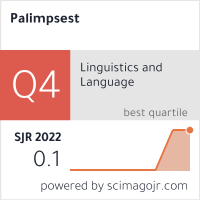MUSIC, FASHION AND THEATRE AS TRANSMEDIA DRAMATURGY IN WOODY ALLEN’S FILM BLUE JASMINE
DOI:
https://doi.org/10.46763/PALIM22713203tAbstract
The aim of this study is film representations in a comedy-drama Blue Jasmine (dir. Woody Allen, 2013). Bearing in mind the communicative and rhetoric performativity of film, a main character Jeanette “Jasmine” French (Cate Blanchett) is closely examined as a socialite fallen on hard times. Two hypotheses are put forward regarding the construct of her delusional identity: (h1) vis-à-vis “Blue Moon” melody, the figure flashback/analepsis depicts the character’s focalized memories, at the same time enabling the viewer to travel in the film-time; (h2) vis-à-vis film/theatre transmedia relationship, fashion/costumes are included as the intertext and citations of a mise en scène from Tennessee Williams’s play ”Streetcar Named Desire“ (dir. Liv Ullmann, 2009). The goal of the research is to show how the pseudoidentity representations are constructed through the dramaturgy tactics, which juxtapose intradiegetic and extradiegetic dramatized narratives, while the deixes in the semiosis (modes of references) engage the audience’s critical view. Given that the film/theatre props are orchestrated in a way which conveys a specific message, narratological and semiotic analysis is further supported by the multimodal tools, which advocate for the close examination of the interplay of modes. Finally, a definition of the focalization in the critical narratology regards the subjectivity as a necessary methodological principle, which best describes how the plot carries some kind of character’s knowledge of the world in the identity construct.
Keywords: film/theatre; semiotics; fashion/costumes; transmediality; critical narratology; flashback/analepsis; pseudoidentity.


